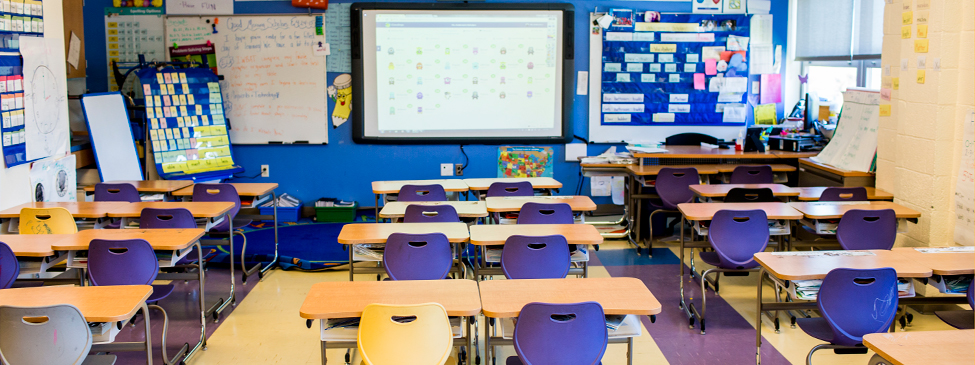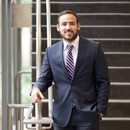“What’s the point in trying?”
That’s the question I often hear from the undocumented students I teach in Texas’ Rio Grande Valley. It’s the same question I once asked myself. After all, I was one of them.
Not so long ago, I was an undocumented high school student at a Texas charter school. President Obama’s Deferred Action for Childhood Arrivals (DACA) executive action enabled me to get my degree and work in this country. I joined Teach for America—to give back and support the students coming up behind me. Last month, I finished my first year as a teacher at my former high school.
Since college, I’ve advocated on behalf of thousands of undocumented students who attend American schools and universities. Like my teachers and parents did for me, I push these young people to stay in school. I strive to be a role model for them. But I’m also painfully aware of their realities.
I was raised in Miguel Aleman, Tamaulipas, a Mexican border town where only a river separated us from the United States. I was privileged to grow up in a middle-class household with two parents who believed in the power of being bilingual. For a time, they paid tuition at a private school across the border, so I could receive a student visa. Every day, I pledged allegiance to two flags and spoke two different languages.
I moved to Texas in 2007 as a result of violence in my hometown in Mexico. For high school, my parents enrolled me in a charter school known for excellence and dedicated teachers. On the first day of orientation, a teacher asked us to draw a journey map of our life. Everyone got started, but I couldn’t. I wanted to tell them I was proudly born in Mexico, but my mother said if people knew, they’d call border patrol and deport me.
Although I was terrified of people finding out the truth about me, and sometimes had trouble focusing in school, teachers like Jennifer Corroy Porras created a safe space for me by establishing trust with students and not allowing us to defame each other based on sexual orientation, skin color, or immigration status. When Ms. Porras heard anyone use derogatory language, she reminded us we were going to be someone in life and that we shouldn’t allow ourselves to use that type of language. Her investment in my success in the classroom and her willingness to listen, devoid of judgment, made me feel comfortable eventually opening up about my immigration status.
My family was also crucial. My mother reminded me everything she’d done in her life was to see me succeed. And after I returned from a school trip to the Midwest, my father told me stories about picking fruits and vegetables there as a 14-year-old. I told them I would get a full scholarship to a university and make them proud.
As a senior, I was accepted to a liberal arts college in Indiana—with close to a full ride, as promised. But it was not enough. A week after graduation, an admissions representative called to say I could not attend because I was not a citizen.
There was that question again: What’s the point in trying?
As fate would have it, President Obama passed DACA a couple of weeks later. In return for giving the Department of Homeland Security every single document of my life—from my birth certificate to the last bill I paid that month—I was given a temporary status to work, travel, and attend colleges and universities within the U.S.
To date, over 600,000 students have been granted this status. I was excited about the opportunities provided to me, but quickly reminded about their limits. After enrolling in my local university and finishing my first year with a perfect 4.0, I applied to another major university where I was accepted to the honors program. Soon after, I heard from another admissions representative, this time to say my temporary status did not qualify me to receive financial aid.
Again, I asked: What’s the point in trying?
In the last few years there has been a push to expand DACA to include more opportunities for undocumented students—and their parents who risk their lives and careers to bring them to this country for better opportunities. But just last week, the Supreme Court blocked a program sponsored by President Obama that would’ve shielded five million parents of Americans from deportation. Depending on the political waters our country wades into next, the temporary protections DACA affords students could also be derailed.
Some people see reversing programs like DACA as a means of getting rid of those who are not—as one border patrol officer said I was not—“proud Americans.” But as a nation, we must consider the consequences of our actions (and inaction). We must understand that what we decide will directly affect thousands of hardworking students, teachers, and families striving for success and contributing to the American economy.
For many students I’ve spoken to, reversing DACA—instead of building on it—would mean zero motivation to continue their education: They know that without a social security number, their job prospects will remain limited whether or not they get a college degree. For me, it would mean despite how hard I worked to get to where I am and share my story with students, I couldn’t do the job I love. It would mean I wouldn’t be able to create safe spaces for these students to open up about their struggles like Ms. Porras did for me. And most importantly, it would mean I wouldn’t be able to tell these students—the next generation of proud Americans—that yes, it is worth trying.



